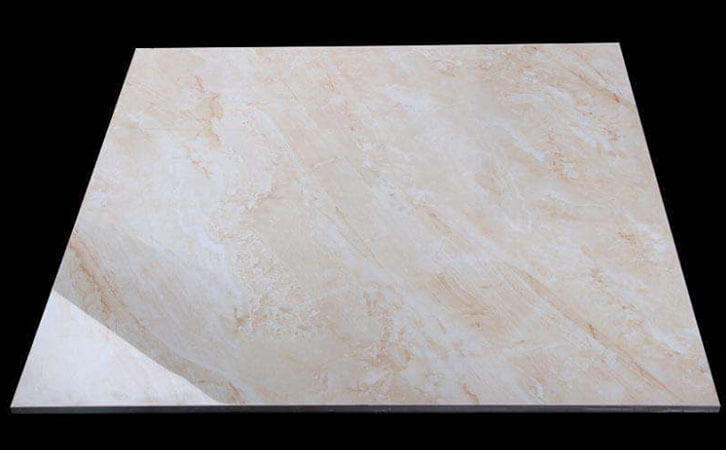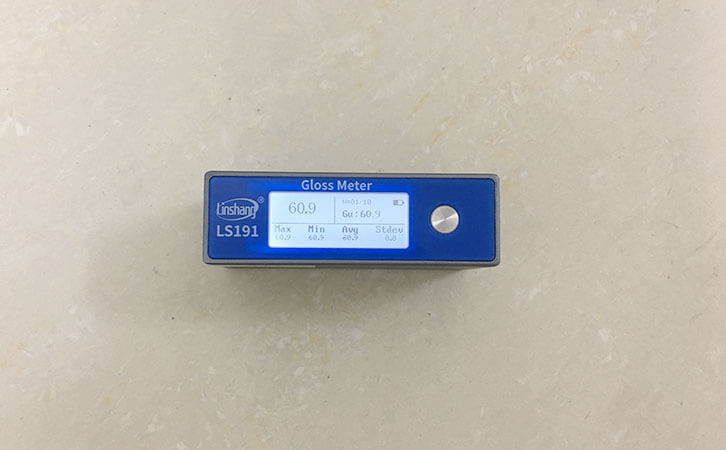Portable Gloss Meter | How to Improve Ceramic Gloss?
How is ceramic gloss determined? How to improve the gloss of the surface? The gloss of ceramic products is an important index to evaluate its quality. In order to accurately evaluate the gloss of daily-use ceramics, a common method is to measure it with a gloss meter.
1. What is the gloss of ceramics?
Gloss is an appearance characteristic of the object surface. Most objects in nature are neither completely specular nor all matte. Ceramic gloss is a physical quantity that evaluates the ability to generate reflected light on the object surface. Generally speaking, gloss is the amount of specular reflected light when a beam of light is irradiated on the ceramic surface under specified geometric conditions. Therefore, it is also called "mirror gloss". The gloss meter used for measurement is also called "mirror gloss meter". Ceramic gloss is a relative measure of the specular gloss it produces.

2. How to improve the gloss of ceramics?
The gloss of ceramics is mainly related to the glaze formula and the glaze making process. If you want to improve the gloss of ceramics, you can start from the following aspects:
(1) Selection of glaze
The firing temperature of the glaze should be silk-screened with the green body to produce a uniform glassy structure at a predetermined firing temperature. When the glaze is arranged, a material with high refractive index can be used to make a glaze layer with high gloss. For example, glazes with Pb and BaO, ZnO and CaO surfaces have good gloss.
(2) Glaze making process
The treatment and processing of glaze raw materials will undoubtedly improve the effect of glaze. The treatment of the clay raw material for glaze can remove the extraneous impurities and organic matter to keep its chemical composition relatively stable. For those raw materials in the glaze that have a large volume change when heated, such as quartz, talc, zinc oxide, etc., it is best to be calcined separately first, that is, introduced into the glaze in the form of clinker. Or promote the melting or dissolution of these oxides in the glaze. Properly improving the fineness of the glaze is conducive to improving the smoothness and smoothness of the glaze, and further improving the gloss of the ceramic glaze.
3. Principles and functions of ceramic gloss meter
When the light shines on the ceramic glaze, due to the different smoothness of the ceramic plane, the specular reflection ability (reflective ability) of different glazes in a certain direction is different, so we feel that different ceramics have different glossiness. But it is impossible for us to distinguish the slight difference in gloss with the naked eye, we can use a ceramic gloss meter to measure the specific gloss value and objectively judge the gloss and whether it meets the requirements in process production.
The portable gloss meter consists of a white light source lens and a receiver that meet certain requirements. The light beam with a certain incident angle is used to irradiate the black glass standard board and the measured sample. The reflected light intensity of the sample and the standard board is measured at a certain receiving condition on the mirror reflection angle thereof.
At present, the accuracy value of the universal 60 ° gloss meter can meausre all types of ceramics, so all measurements can be completed using the 60 ° ceramic glossiness meter. We take the LS191 ceramic gloss meter as an example for testing. After each test, the current test data can be stored in the database by pressing the button. Through the statistics data measured by the gloss meter, we can also judge the gloss uniformity of this ceramic glaze.
